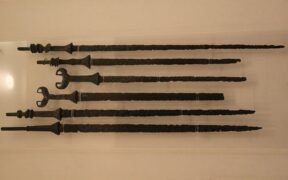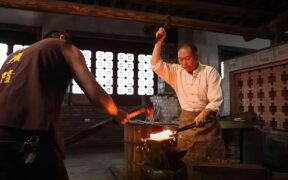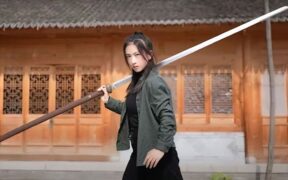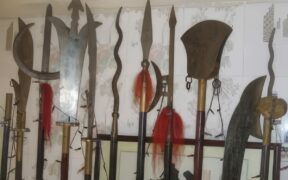Our content features commercial links to our products, committed to transparent, unbiased, and informed editorial recommendations. Learn More
Traditional Chinese Weapons: Their History and Use
NO AI USED This Article has been written and edited by our team with no help of the AI
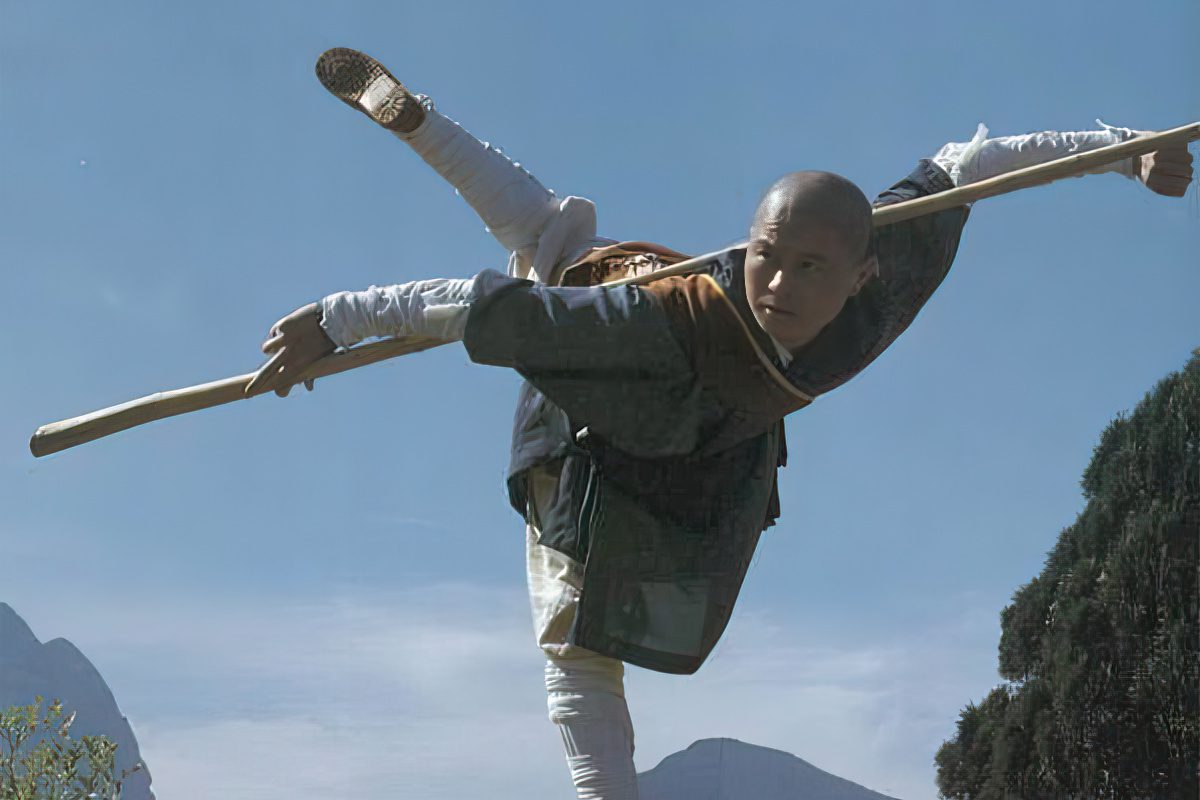
When preparing for battle in China, traditional martial practitioners carried at least three kinds of traditional Chinese weapons. This would consist of a primary weapon such as a staff, spear, sword, or saber, in which one was most skilled. A secondary weapon such as a chain or a whip could be used in case the primary weapon is lost. Others can also be utilized from long distances or in a surprise attack.
Learn more about the different types of traditional Chinese weapons, their history, and use in martial arts.
Types of Chinese Weapons
There are various types of weapons used throughout Chinese martial arts history. Generally, they can be divided into four main classifications: short weapons, long weapons, soft weapons, and projectile or throwing weapons.
Short Weapons
All short weapons were more efficient at short-range combat and easy to carry. However, they were mostly used for defense rather than attack and are therefore, impractical for large-scale battles. Generally, the length of short weapons ranged from 2 to 5 chi (about 66 to 166 centimeters or 26 to 65 inches), while very short weapons were no longer than the distance from the elbow to the hand.
1. Jian (Sword)
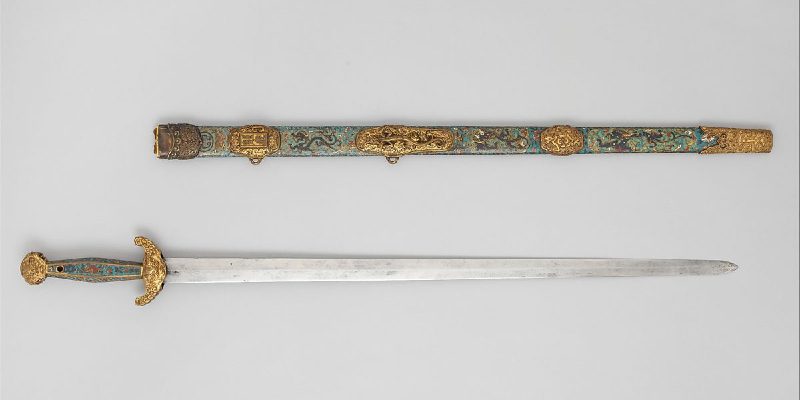
The term jian (劍) refers to the straight and double-edged Chinese sword. Martial art practitioners considered it the king of short weapons due to its versatility. It served as a primary weapon, though its shorter variety, the duan jian, could be hidden and carried as a secondary weapon.
Shorter than the regular sword, the duan jian (短剑) also served as a throwing weapon by adding a piece of cloth to the pommel. These short swords were also used as double weapons called shuang jian (双剑).
2. Dao (Saber)

The term dao (刀) refers to a single-edged Chinese saber, commonly known as a broadsword. It served as a slashing, cutting, and hacking weapon. There were various types of dao, with the earlier ones being straight and the later ones being curved. A duan dao (短刀)was a shorter variation of the regular saber, and its shorter length allowed it to be thrown or used in pairs.
3. Hu Die Dao (Butterfly Saber)

Widely referred to as butterfly swords, the hu die dao (蝴蝶刀) is a type of double saber. These weapons developed due to merging typical Chinese fighting knife blades with Western-inspired hilts. They featured distinctive D-shaped guards, though their blades came in various forms.
The narrow types were efficient for heavy cuts and were likely to be used by the Chinese military units and the local militia. On the other hand, the broader types were efficient for disabling opponents without killing them and remain popular today among martial artists.
4. Gou (Hook)

Chinese hook swords are widely called gou (钩), a term that translates to “hook”. When used in pairs, they are referred to as shuang gou, meaning double hooks. These weapons feature a crescent-shaped handle and a hooked tip that resembles a crowbar.
They served as a multipurpose weapon for disarming and attacking an opponent. These hooks are among the weapons of Shaolin monks and common in Baguazhang.
5. Fu (Short Axe)
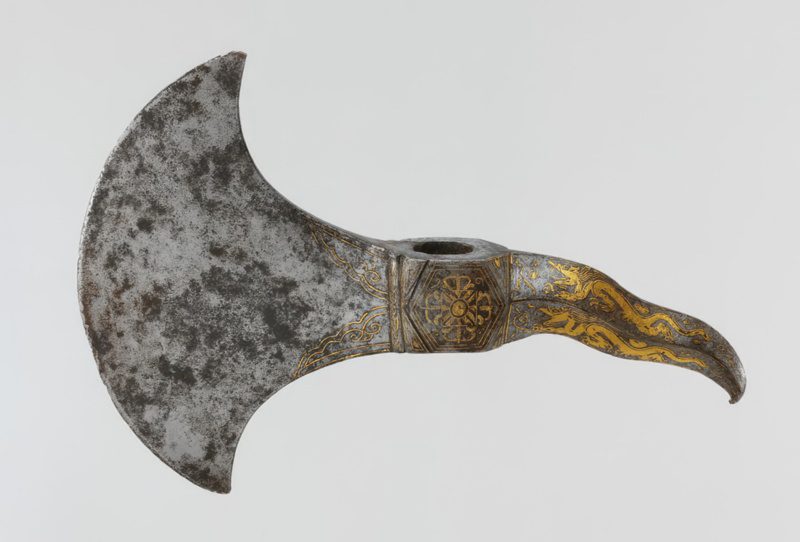
Commonly used in pairs, the short ax (fu,斧) was developed from the earlier long battle axes used in horseback fighting. Its heavy ax head was efficient against armor compared to a sword. However, the sword allowed more precision than a short ax. These weapons are less popular in kung fu, though many practitioners utilize them in strength training.
6. Tie Jian (Iron Rod)
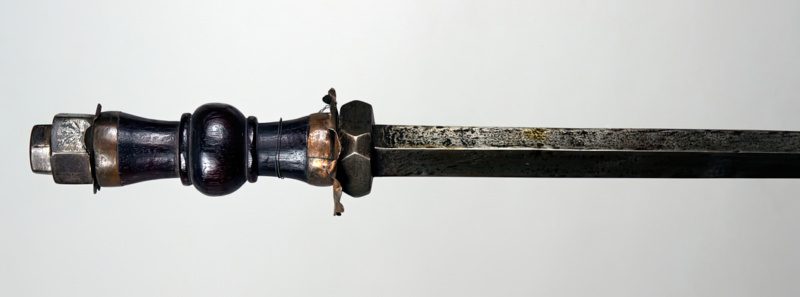
The term jian (鐧), written in a different character from the sword (劍), is also used to describe a heavy bar mace with a smooth rod. They were typically made from iron and called tie jian (鐵鐧) or “iron rod,” but there were also tong jian (bronze rod). The name iron rod is a reference to its plain metal rod.
In the West, the tie jian is regarded as a type of Chinese sword breaker—a heavy weapon capable of breaking swords and other weapons. During the Ming dynasty, the military used large two-handed versions of tie jian. By the Qing dynasty, single-handed versions were more common.
However, shorter versions of tie jian probably served as batons of escorts and bodyguards and were non-lethal. They were efficient for hitting and smashing an opponent and stopping an attacker without killing him.
7. Tie Bian (Iron Whip)

Another type of Chinese bar mace, the tie bian (鐵鞭) or iron whip is recognized for its ornamental bamboo-section designs. In military texts, it is referred to as bian (鞭) or whip to differentiate it from the similar tie jian (iron rod) with a plain iron rod.
In the West, the tie bian is also considered a type of Chinese sword breaker, which resembles bamboo. There were also two-handed and single-handed versions of these weapons. The tie bian was among the weapons issued to the Jian Rui Ying, the elite unit of the Qing dynasty military.
The most known depiction of the tie bian is probably in the hands of Zhao Gongming, the god of wealth in Chinese folk religion. The weapon likely served as a symbol of his power.
8. Chui (Hammer)
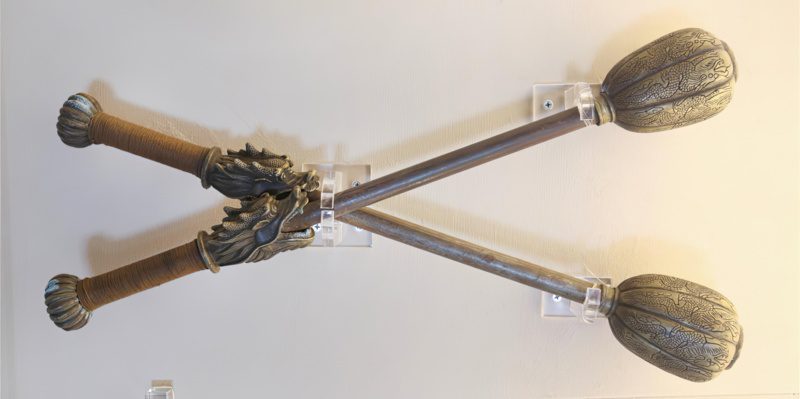
A type of mace, the chui (锤) was a round hammer, usually used in pairs. It had a heavy head on the end of the handle for delivering powerful strikes. This ancient Chinese weapon was most popular in the Shang and Zhou dynasties.
The chui was known as the copper hammer because it was often made from copper, though other materials were later used. Since they are typically heavy and require great strength to wield, these weapons are not popular among kung fu practitioners.
9. Tie Chi (Iron Ruler)
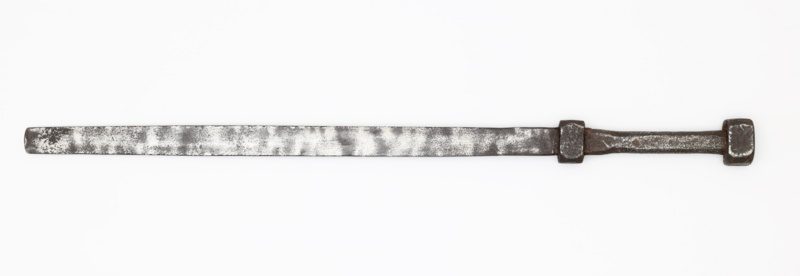
The iron ruler was a flat metal rod used by guards and peace officers during the Spring and Autumn Period and Warring States Period. However, it was a non-military weapon, so not much was written about tie chi (铁尺). These iron rulers likely served as disabling weapons and were not designed for killing.
10. Bi Shou (Dagger)

The bi shou (匕首) or dagger was one of the most popular concealed weapons, often carried in the boot or at the waist. During the Han dynasty, it functioned as a secondary weapon for short-range fighting, and all the soldiers were required to carry it. When used as a throwing weapon, a tassel was attached to help balance it in flight. These daggers were also often carried in pairs.
11. Zi-Wu (Deer Horn Knives)
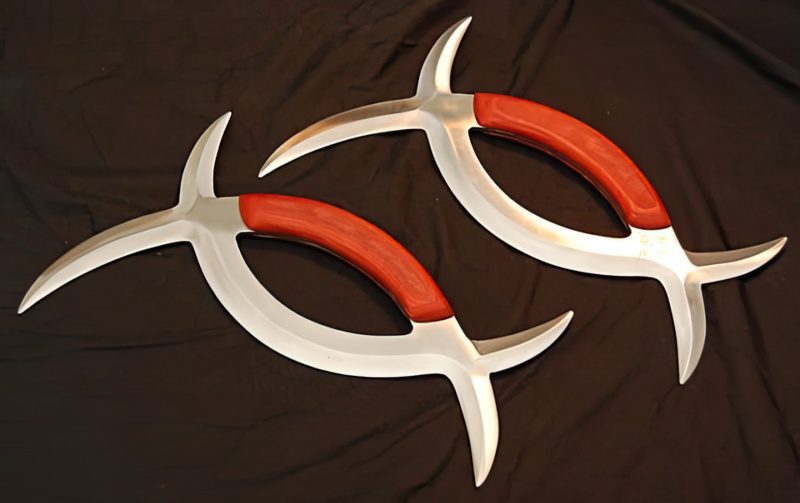
The deer horn knives are distinguished for their overlapping crescent shape. Often used in pairs, these weapons were designed for disarming opponents and utilized in cutting, hooking, and seizing techniques. However, they are known by several names, including the deer hook sword and zi-wu (子午) mandarin duck axe. Today, they are among the weapons used in Baguazhang martial arts.
12. Emei Ci (Emei Piercers)

The Emei piercers are thin metal rods with sharp points, efficient for stabbing. Each has a ring at the center, attached to a swivel joint, which allows spinning. These weapons can also be concealed for surprise attacks.
The Emeici (峨嵋刺) originated from Mount Emei in the Sichuan Province in the northern Song dynasty, hence the name. These weapons remain popular in martial arts and practitioners use them for open-palm techniques.
Long Weapons
Long weapons were efficient for long-range combat and the heavier types were more difficult to block because of their weight. The most common long weapons were lances, spears, halberds, and staffs.
1. Qiang (Spear)

The Chinese spear is known as qiang (枪), a significant weapon in warfare used by the military, militia, and peasant rebels. In Chinese martial arts, it is considered the king of all weapons. It had a head attached to a long shaft, often with a red tassel below the spearhead.
The Chinese spear came in various shapes and sizes, with the typical qiang being leaf-shaped. Very long spears were called mao (矛), which likely served as lances suited for armor-piercing thrusts than most types of qiang.
2. Gun (Staff)
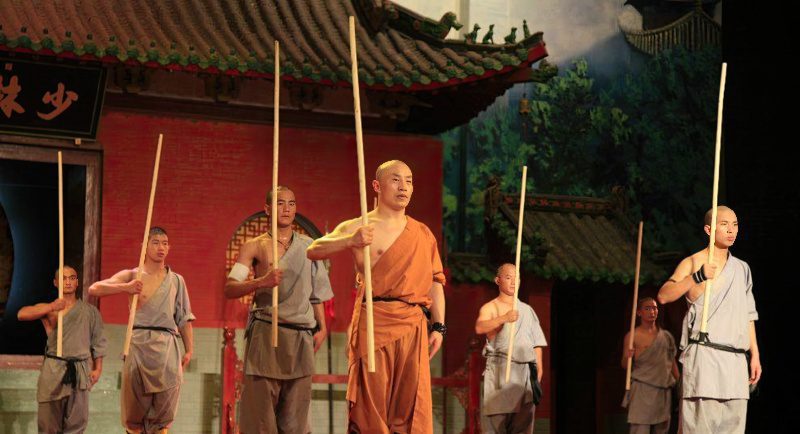
The Chinese staff (棍, gun) is considered the grandfather of all weapons. The long staff is the most common, usually about 7ft long, and constructed from hardwoods like oak or white wax. It originated from the long spears used by classical warriors. The Shaolin monks removed the spearheads and trained with only the shafts suited for their peaceful monastic environment.
3. Guandao (Polearm)

Named after the famous Guan Yu, the guandao (关刀) is a type of Chinese pole weapon with a curved and scalloped blade. Most historical references refer to it as yanyuedao (偃月刀), meaning reclining moon blade. It was among the weapons of the Qing dynasty Green Standard Army. Today, the guandao remains a common weapon in Shaolin kung fu and Chen-style taijiquan.
4. Yue Ya Chan (Crescent Moon Spade)
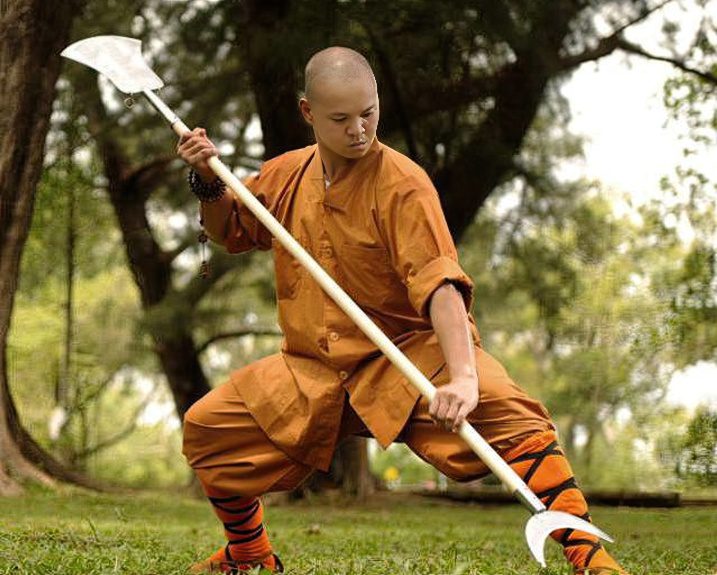
Also known as the monk spade, the yue ya chan (月牙铲) is a typical weapon associated with the Shaolin warriors. It features a crescent-moon-shaped blade mounted on a wooden shaft and a flat wedge-shaped blade on one end.
In ancient China, the Shaolin monks carried spades when traveling to bury corpses they might find on their journey as part of their religious obligation. Eventually, it turned into a self-defense weapon with the addition of the crescent blade, which allowed hooking and sweeping techniques.
5. Cha (Fork or Trident)
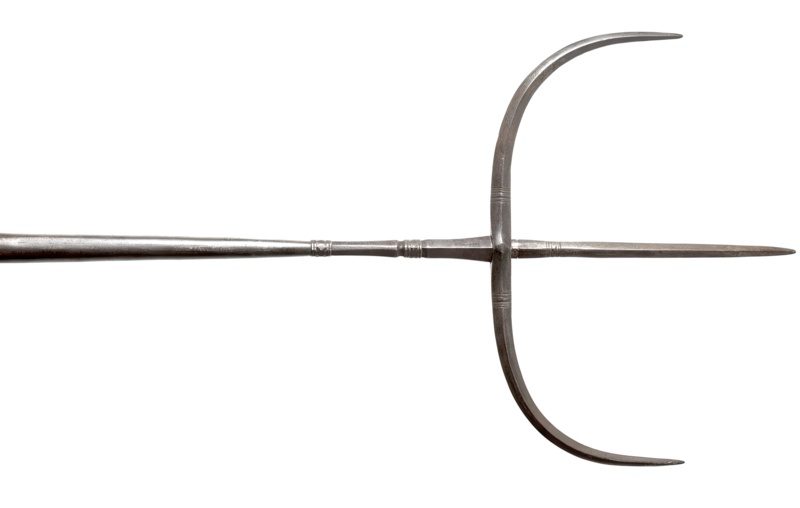
Sometimes called a tiger fork (虎叉, hucha), the cha had three heavy prongs. It was originally used as a hunting tool, but later became a defensive weapon. The Chinese soldiers, guards, and militia used it for disarming and pinning an enemy down.
The weapon also had a smaller type, a short trident (短叉, duan cha) that was lighter and could easily be carried. Unlike the heavier trident, the duan cha was sometimes utilized as a throwing weapon and used in pairs.
6. Ji (Halberd)
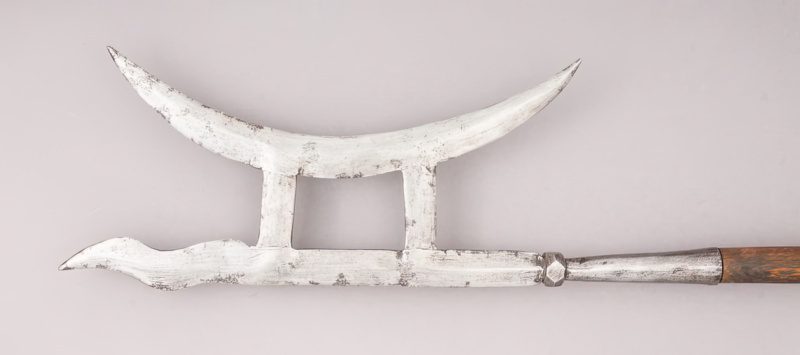
There are various types of Chinese halberds (戟, ji), with the crescent-moon-shaped blade being the most popular. Some variations have two crescent-moon blades on both sides. These were used for pulling down an enemy’s shield from a distance. Other types include the horse halberd (马戟, ma ji), snake halberd, and so on.
7. Ge (Dagger-Axe)
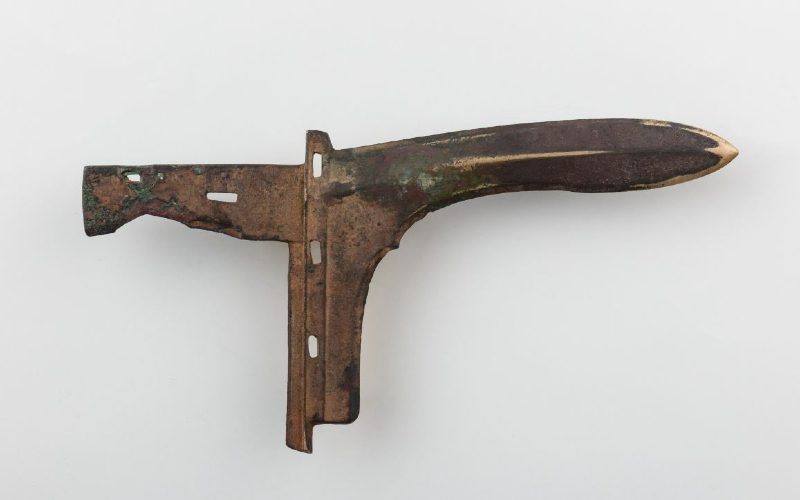
In ancient China, the dagger-axe was used for hooking and cutting. The blade was mounted to a long shaft suited for sweeping attacks and pulling down an opponent. The weapon is sometimes called the flat-head halberd or L-shaped lance. During the early Chinese dynasties, it was efficient in horseback fighting, though foot soldiers usually preferred shorter versions. The spear gradually replaced them by the time of the Han dynasty.
Soft Weapons
Flexible weapons are often referred to as soft weapons, though they can also be hard, lightweight, heavy, and long. Soldiers and civilians used them as backup and concealed weapons, worn on the waist or carried in a pocket. However, most of them were more challenging to manipulate than other weapons. The most popular types include the rope dart, meteor hammer, and chain whips.
1. Sheng Biao (Rope Dart)
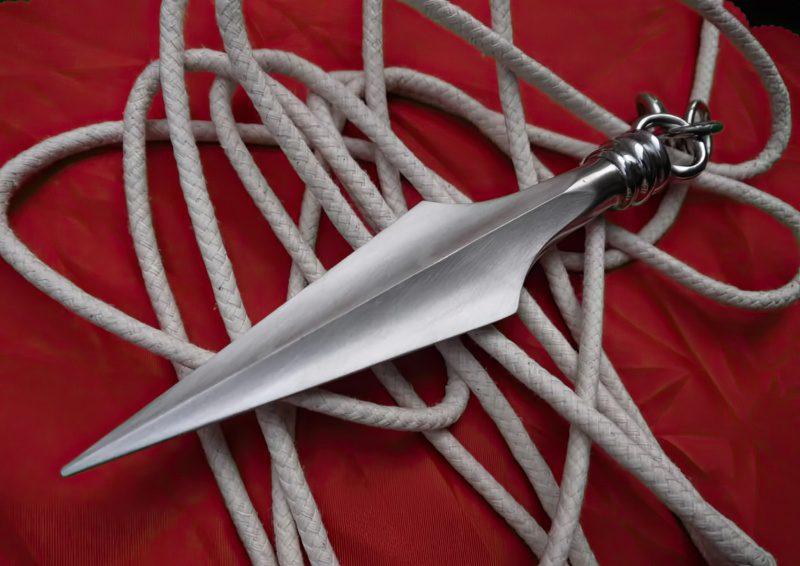
The sheng biao (绳镖) consists of a steel dart tied to a long rope, making it the longest of all traditional Chinese weapons. It was an efficient weapon that could reach distant targets and be retrieved easily. Generally, a practitioner would throw the dart while the left hand held the end of the rope. Unlike other throwing weapons, the rope dart was restricted by the rope, so an off-hand dart later replaced it.
2. Liu Xing Chui (Meteor Hammer)
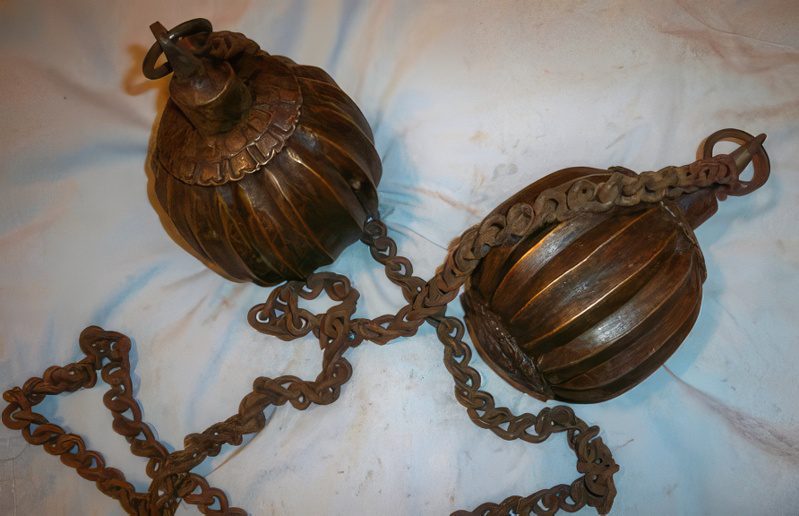
A meteor hammer (流星錘, liu xing chui) featured a weighted metal ball tied to a chain. It is variously called shooting star hammer or comet star hammer. It was used similarly to a rope dart, but was also thrown out in all directions, smashing poorly defended targets. The weapon was most popular during the Tang and Song dynasties, but it was too heavy to be carried and later replaced by lighter weapons.
3. Jie Bian (Sectional Steel Whip)
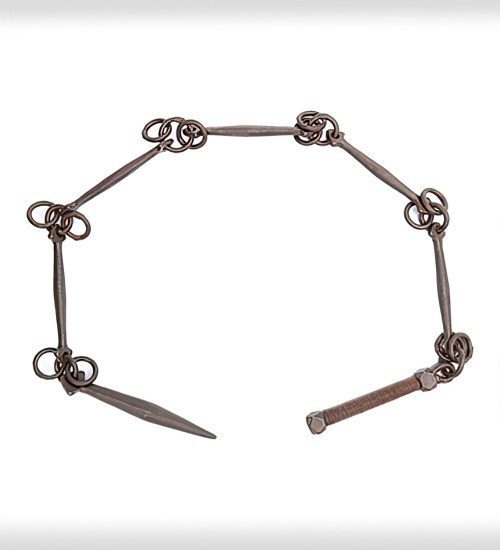
Also called a chain whip (节鞭, jie bian), sectional whips feature short metal rods joined together by chains and attached to a handle. Sectional whips are referred to as soft whips because they are flexible, though the metal rods are hard.
These weapons are usually named after the number of their sections, such as qijiebian (seven-section whip) and jiujiebian (nine-section whip). Today, lighter versions of these weapons are used in martial arts, though historical ones weighed over a kilo.
4. San Jie Gun (Three-Sectional Staff)
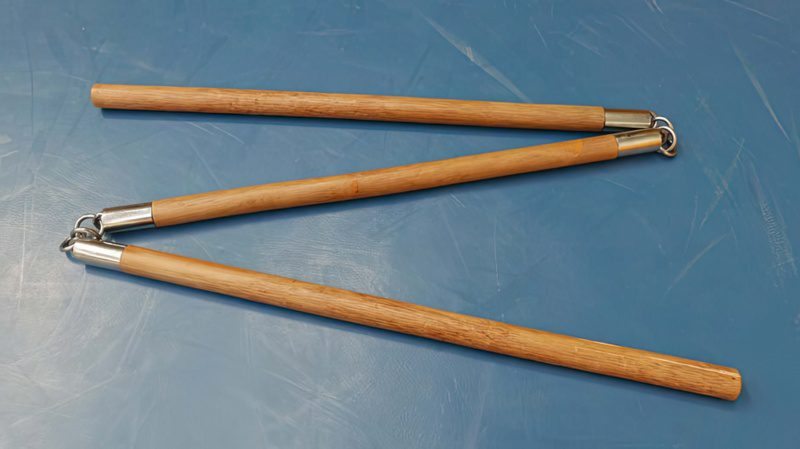
The san jie gun (三節棍) consisted of three short staves connected by chains. It functioned as a self-defense weapon, suited for either short-range or long-range combat. Unlike a long staff, it can be easily concealed and carried. It also allows various methods of attack and defense. Versatile and hard to learn, it is among the weapons of choice for many advanced martial artists.
Projectile and Throwing Weapons
Bows and arrows were powerful weapons in warfare before the invention of firearms. The Chinese developed the crossbow and used various projectile and throwing weapons. Most hand-thrown weapons were small enough to be concealed in a sleeve or robe and were efficient in surprise attacks.
1. Gong Jian (Bow and Arrow)

The term gong (弓) is the Chinese word for bow, while jian (written in Chinese character 箭) applies to arrows. By the Qing dynasty, the Manchu-style bows became the typical Chinese bow. Some were large and powerful, especially those used in military examinations.
However, there are various types of bows and arrows in Chinese history. There were crossbows (弩弓, nugong) and sling bows (弹弓, dan gong). The latter was a type of slingshot or pellet bow that utilized pellets instead of arrows and mainly used for small-game hunting.
2. Fei Biao (Flying Dart)
The fei biao (飞镖) was a hand-thrown projectile weapon, usually about 12 centimeters (4 inches) long. Its shape varied from triangular to cone-shaped and needle-like. Unlike the shuriken of Japanese culture, the Chinese darts have a needle-like structure, which makes them not easy to throw. Also, throwing these darts required proper techniques and skills, which likely prevented the opponents from throwing them back.
The flying dart is not restricted by a rope, though some feature tassels to improve balance and stability. It also served as a concealed weapon carried at the waist. Some darts also had poisoned tips that made them efficient weapons.
3. Tong Zhu (Brass Chopsticks)
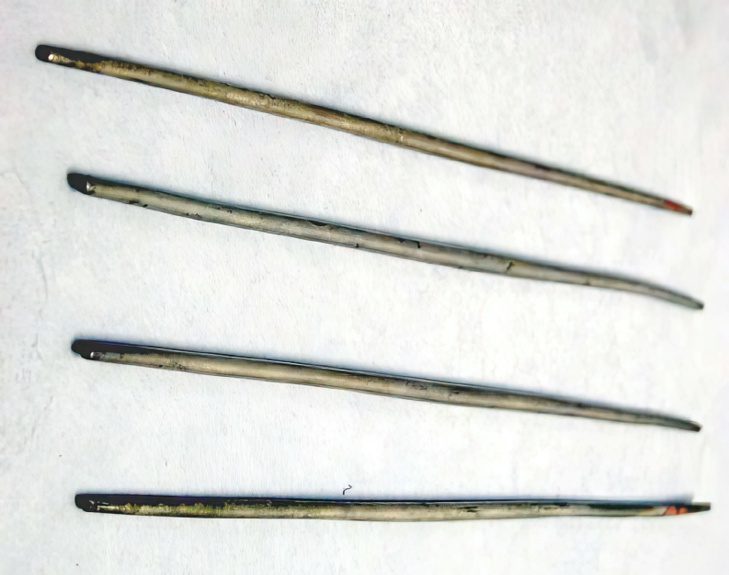
Brass chopsticks (铜箸, tong zhu) also functioned as hand-thrown weapons. However, the use of bamboo chopsticks as projectile weapons originated from Shaolin during the Tang dynasty. During the Ming dynasty, shooting bamboo chopsticks instead of arrows became common.
Unlike flying darts and brass chopsticks, bamboo chopsticks are lightweight and require greater power from the wielder. Today, some martial arts practitioners train with wooden and unsharpened chopsticks as the skill can be utilized in real-life on paintbrushes and writing pens.
Conclusion
The Chinese have developed a vast array of weapons for different purposes. Chinese swords, sabers, staffs, and spears were among the primary weapons in battle. Martial artists also used concealed secondary weapons and those thrown by hand. Today, these traditional weapons remain relevant in Chinese martial arts.
